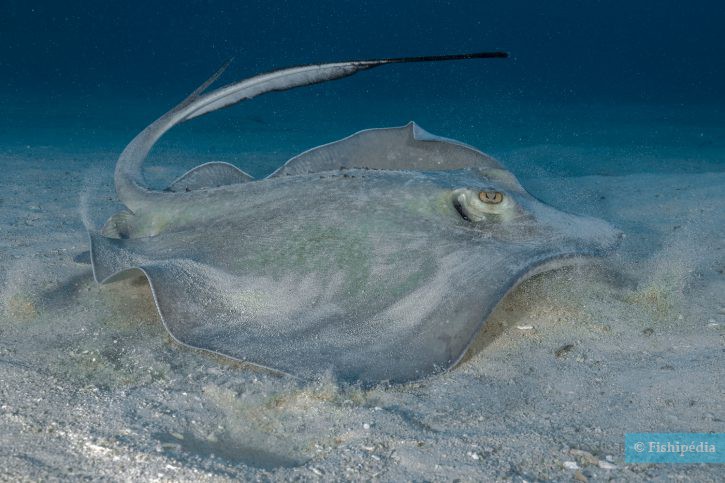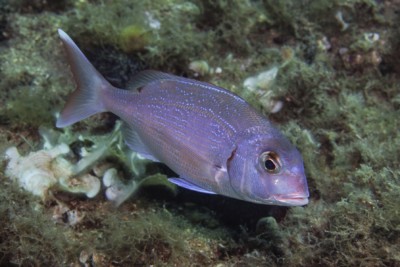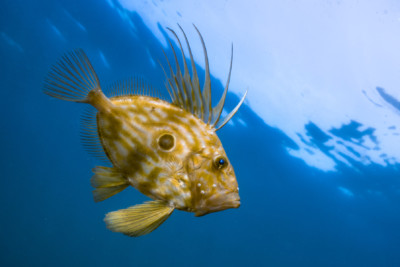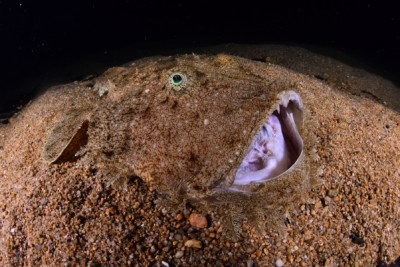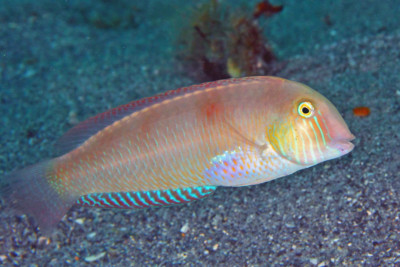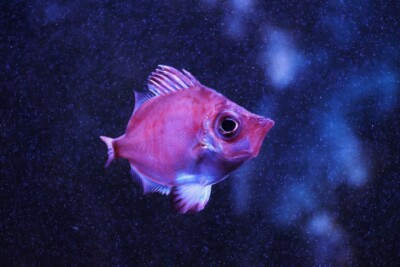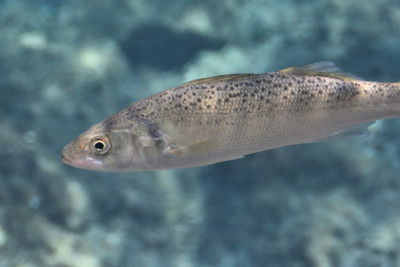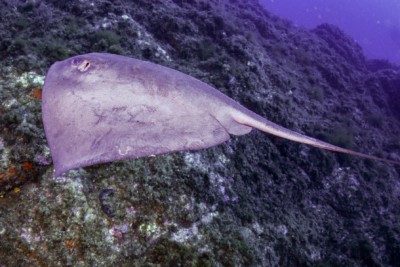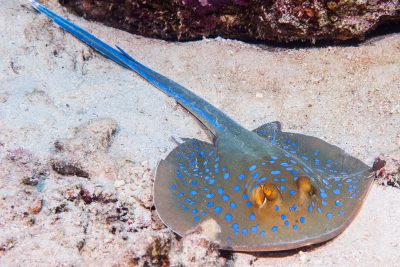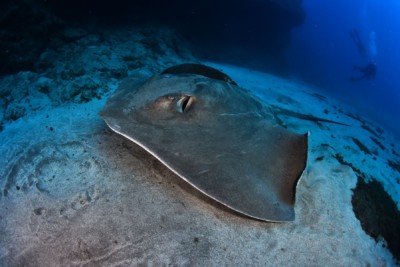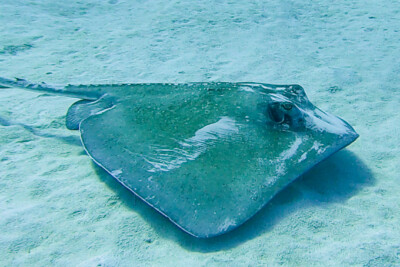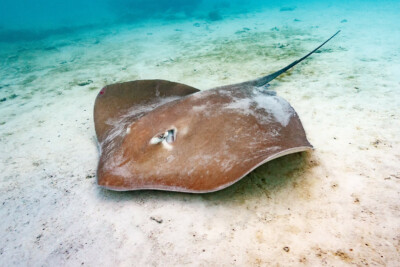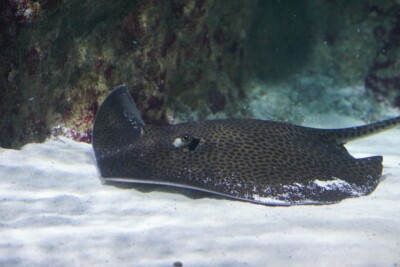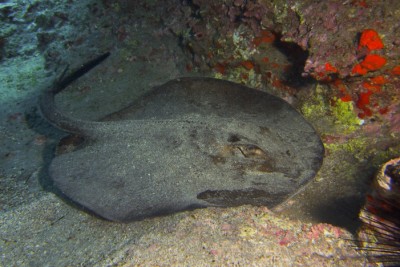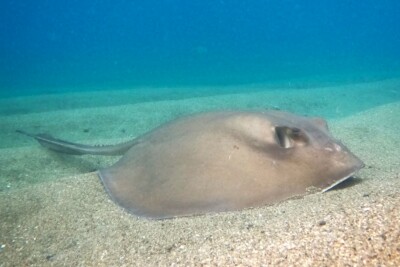common stingray
| Scientific name | Dasyatis pastinaca |
|---|---|
| Descriptor | Linnaeus |
| Year of description | 1758 |
| IUCN category (World) | VU |
| Family | Dasyatidae |
| Genus | Dasyatis |
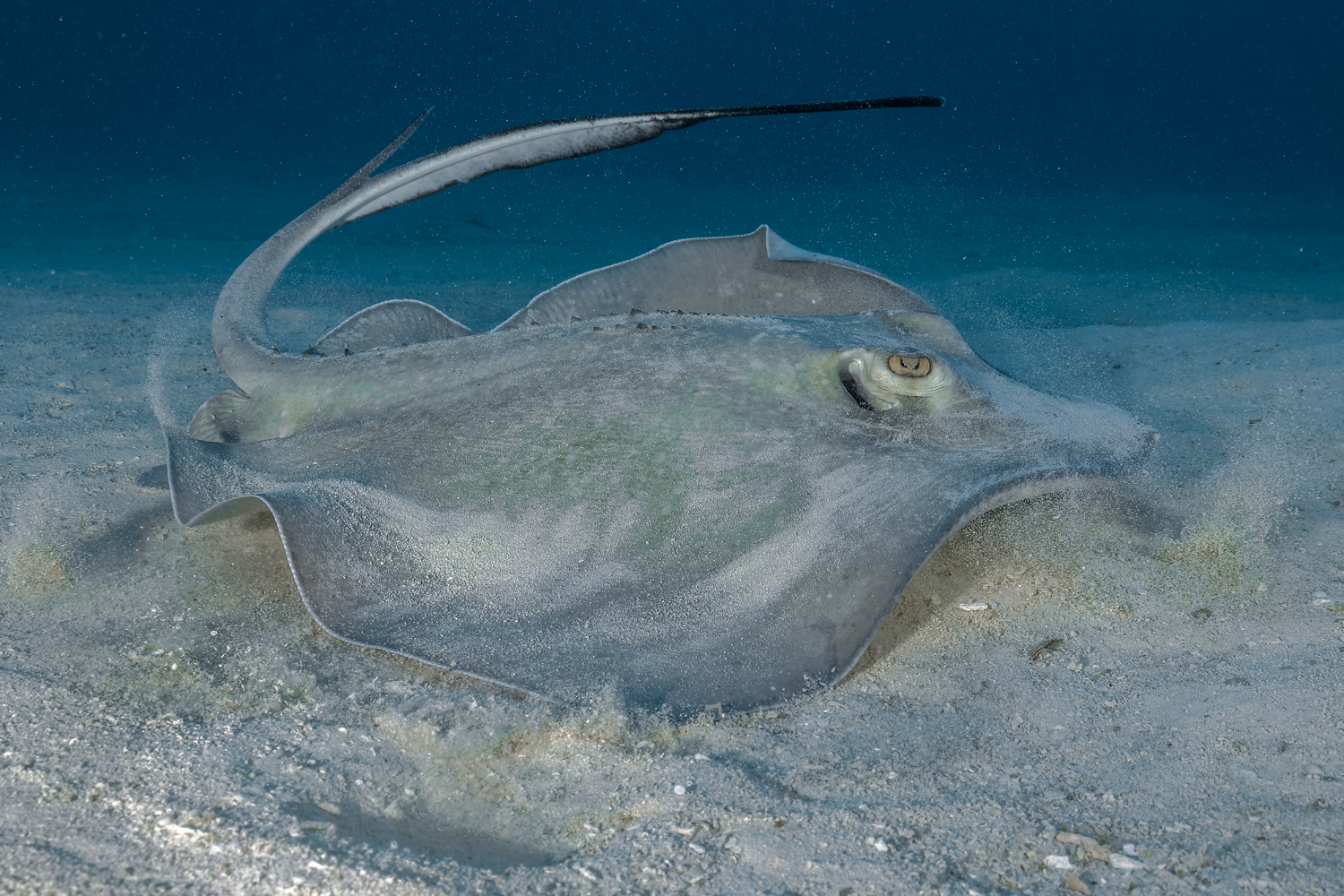

Introduction
The common stingray is an emblematic species of the Atlantic Ocean and the Mediterranean Sea. It can be found from Senegal to the North Sea, in coastal environments and lagoons.
Its tail is equipped with a venomous sting and its sting is dangerous to humans.
Who is it?
Morphology
-
Type
-
Average size60 cm
-
Maximum size250 cm
-
ShapeCircular
-
Type
-
Average size60 cm
-
Maximum size250 cm
-
ShapeCircular
How to recognize This fish ?
Dasyatis comes from the Latin da sus meaning "hairy" and pastinaca from the Latin pastinaca meaning "stingray".
The common stingray has a diamond shape with a slightly pointed head. Its back is beige and its belly is white. Its eyes are located very high, giving it a very wide field of vision. At the base of its head, slightly towards the back, are very large spiracles, respiratory openings.
The tail of Dasyatis pastinaca is generally the same size as its body. The sting is located in the middle of the tail.
The record size for this species, including the tail, is 2.5 m. It can be confused with Dasyatis centroura, the roughtail stingray, a name derived from the protrusions on its back. It can also be confused with Dasyatis tortonesei, a very similar but smaller species.
Sexual dimorphism
Like sharks, rays have two claspers. These are appendages resulting from the modification of the pelvic fins that allow the transmission of sperm to the female's cloaca. Males can only use one clasper at a time.
Behaviour & Life cycle
-
dietcarnivorous
-
Sociabilitysolitary
-
territorialNo
-
Way of livingdiurnal
The common stingray is a solitary fish that moves along the seabed.
When not swimming, the common stingray is almost always buried in the sand. Camouflaged, it does not fear divers or bathers, making it extremely dangerous.
When it feels threatened or someone steps on it, it raises its sting, which can be up to 35 cm long, and whips with its tail to sting the intruder. The sting can be lethal.
Reproduction
-
Reproductionovovivipare
The common stingray is ovoviviparous and can have 5 to 7 pups per litter after a gestation period of 4 months.
Life-threatening species
-
VenomousYes
This species is venomous and can cause serious injuries when touched. In the most serious cases, it can cause death.
What to do in the event of a sting?
in case of sting, the following rules should be followed, in this order:
- Isolate the victim from the danger and quickly remove him or her from the water
- Call for help
- Lay the victim down in a half-sitting position and avoid any effort
- Immobilize the affected limb
- Clean the wound
- The venom of this species being thermolabile, it can be neutralized if it is submitted to a temperature of about 45 °C. It is therefore possible to heat the wound. This popular technique should be practiced with great care so as not to aggravate the wound by burning it. It is advisable to immerse the affected limb in hot water.
- If the puncture is too deep, heating the wound will be less effective.
Sometimes the sting can cause discomfort or even loss of consciousness in the victim. The stings are usually very painful.
Origin and distribution
What is its habitat?
Natural environment characteristics
-
Temperature10 - 25 °C
-
Depth1 - 200 m
Biotope presentation
The common stingray moves over sandy bottoms in search of crustaceans and worms buried in the sand. It is rare for them to venture into rocky areas.
They are more commonly found in coastal waters, up to 200 m deep, but they can also be seen in estuaries with brackish water.
Species of the same biotope
To go further
Sources & Contributions
Participation & Validation
The Fishipedia team and specialist contributors are committed to providing high-quality content. However, although the information comes from scientific sources or testimonials from specialists, the cards may contain inaccuracies.

Adrien Falzon

Benoit Chartrer
Translation
Translation done with the valuable contribution of our translators, who make this information available to a wider audience. We sincerely thank them for their commitment.
Scientific partners
Tags
Species of the same family
Same genus
Species of the same biotope
